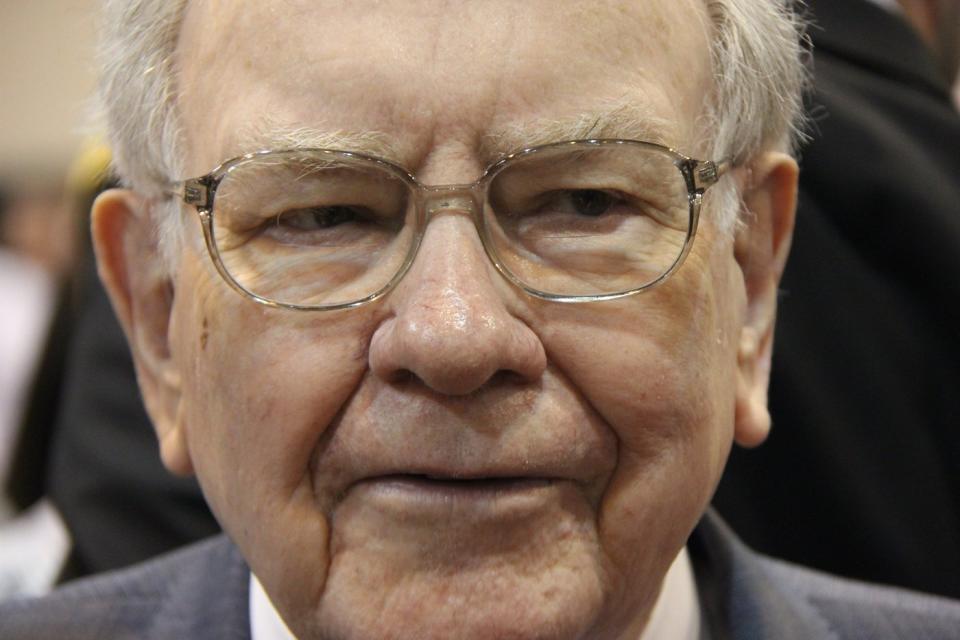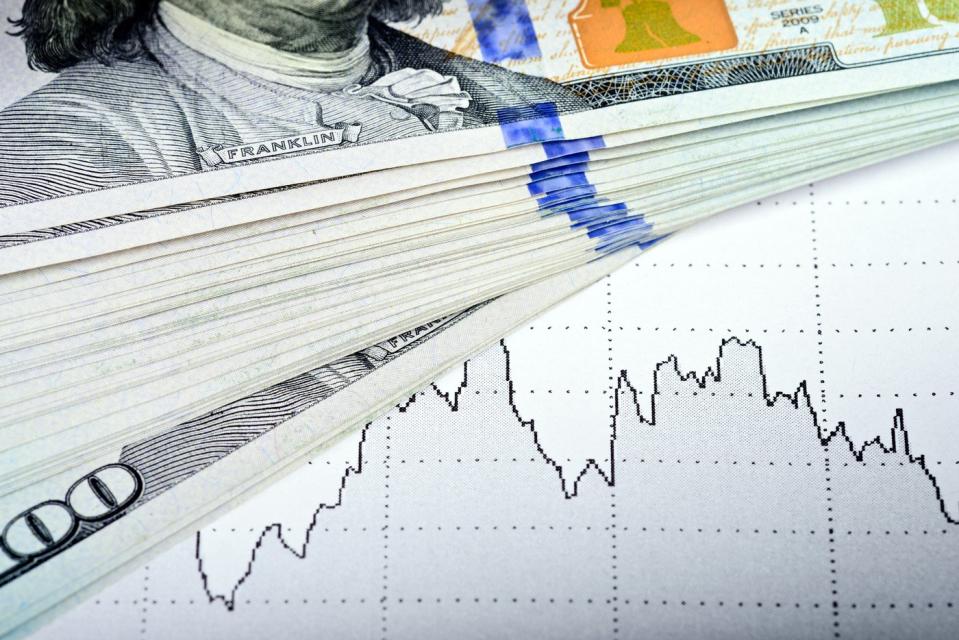For almost six decades, Berkshire Hathaway (NYSE: BRK.A)(NYSE: BRK.B) CEO Warren Buffett has been putting on a clinic for Wall Street. Despite being just as fallible as any other investor, the Oracle of Omaha has overseen a greater than 5,260,000% return in Berkshire's Class A shares (BRK.A) since taking the reins in the mid-1960s.
Returns of this magnitude are why 40,000 people flock to Omaha, Nebraska, every year to hear Buffett speak about stocks, the U.S. economy, and the investing philosophy that's made him, and Berkshire Hathaway's shareholders, notably richer. It's also why investors pay very close attention to Berkshire's quarterly Form 13F filing, which details which stocks were purchased and sold in the latest quarter.
But investors don't always have to wait a full three months to discover what Buffett and his top investing aides, Todd Combs and Ted Weschler, have been up to.
The Oracle of Omaha has dumped almost $2.3 billion worth of BofA stock in less than two weeks
In instances where Berkshire holds a greater than 10% stake in a company, Buffett and his team are required to file Form 4 with the Securities and Exchange Commission every time shares are purchased or sold. Over the last six trading sessions (as of this writing on July 25), Berkshire Hathaway's brightest investment minds haven't been able to press the sell button on No. 2 holding Bank of America (NYSE: BAC) fast enough.
Form 4 filings show that 33,890,927 million shares of BofA stock (as Bank of America is more commonly known) were sold from July 17 through July 19. Last Thursday, a separate Form 4 filing showed that 18,899,518 additional shares were sold from July 22 through July 24. Altogether, 52,790,445 shares of Bank of America, totaling almost $2.3 billion, have been disposed of in less than two weeks.
There are a number of reasons that explain why Buffett and his team have trimmed in the neighborhood of 5% of their company's second-largest holding. One possibility is simply that BofA isn't the screaming bargain it once was. After trading below its book value for much of the last 15 years, a 25% to 30% premium to book value might have represented an attractive profit-taking point.
Berkshire's smartest minds may also be anticipating a shift in the Federal Reserve's monetary policy. No money-center bank is more sensitive to changes in interest rates than Bank of America. While it disproportionately benefited when the most-aggressive rate-hiking cycle in four decades kicked off in March 2022, its net interest income is likely to be hurt more than its peers when the nation's central bank begins easing rates.
Historically low corporate tax rates might have encouraged Buffett to lock in some gains, as well. This was the justification Buffett used during Berkshire Hathaway's recent annual shareholder meeting to explain why over 116 million shares of Apple were sold during the first quarter.
While there are a number of viable explanations, Warren Buffett's recent selling activity of Berkshire's second-largest holding looks to be, more than anything, a reminder of his subtle $56 billion warning to Wall Street.
The Oracle of Omaha is an undeniable optimist who has repeatedly stated that he wouldn't bet against America. Since the U.S. economy expands over multiple decades, he chooses to look past inevitable (but short-lived) recessions and focuses, instead, on buying stakes in wonderful businesses at perceived-to-be fair prices that can thrive over the long run.
The quirk is that the long-term ethos Buffett and his late right-hand man Charlie Munger instilled at Berkshire Hathaway doesn't always line up with his short-term actions.
Although Warren Buffett rarely, if ever, admits that the stock market is expensive, he'll sit on his company's capital when there's little in the way of value to be found. Additionally, he won't shy away from paring down Berkshire's stakes in non-forever holdings, which includes Bank of America.
For six consecutive quarters between Oct. 1, 2022 and March 31, 2024, Buffett has been a net-seller of equities (dollar figure in parenthesis represents the amount of net-selling for a given quarter):
Q4 2022: $14.64 billion
Q1 2023: $10.41 billion
Q2 2023: $7.981 billion
Q3 2023: $5.253 billion
Q4 2023: $0.525 billion
Q1 2024: $17.281 billion
All told, Berkshire's investment team has overseen $56.09 billion in aggregate net-equity sales over an 18-month stretch.
This persistent selling activity, coupled with Buffett's desire to increase Berkshire's already mammoth cash position, is a very clear warning to Wall Street that stocks are pricey.
This valuation metric has a flawless track record of forecasting big moves lower for stocks
While a number of valuation tools suggest stocks are expensive, none has done a better job of forecasting downtrends on Wall Street than the S&P 500's (SNPINDEX: ^GSPC) Shiller price-to-earnings (P/E) ratio, which is also known as the cyclically adjusted price-to-earnings ratio, or CAPE ratio.
The traditional P/E ratio, which divides a company's share price into its trailing-12-month earnings per share (EPS), is probably the best-known valuation metric on Wall Street. Comparatively, the Shiller P/E is based on average inflation-adjusted earnings from the previous 10 years. The advantage of looking at 10 years' worth of earnings history is that it smooths out the adverse impact of one-off events.
As of the closing bell on July 25, the Shiller P/E ratio was near 35, which is more than double its average reading of 17.14, when back-tested to 1871.
What's even more worrisome is examining what happens to stocks when the Shiller P/E surpasses 30. Including the present, we've only witnessed six instances where the S&P 500's Shiller P/E topped 30 during a bull market spanning 153 years. The prior five instances were all, eventually (key word!), followed by pullbacks ranging from 20% to 89% in the S&P 500 and/or Dow Jones Industrial Average.
Although the Shiller P/E offers no assistance in determining when or where stocks will peak, it does pretty clearly show that extended valuations eventually lead to big pullbacks in Wall Street's major stock indexes.
Warren Buffett and his crew continuing to sell shares of Bank of America is added evidence that they view this market as being historically pricey. While long-term investors likely have little to worry about, there's reason to believe a sizable downdraft is coming for stocks.
Should you invest $1,000 in Bank of America right now?
Before you buy stock in Bank of America, consider this:
The Motley Fool Stock Advisor analyst team just identified what they believe are the 10 best stocks for investors to buy now… and Bank of America wasn’t one of them. The 10 stocks that made the cut could produce monster returns in the coming years.
Consider when Nvidia made this list on April 15, 2005... if you invested $1,000 at the time of our recommendation, you’d have $692,784!*
Stock Advisor provides investors with an easy-to-follow blueprint for success, including guidance on building a portfolio, regular updates from analysts, and two new stock picks each month. The Stock Advisor service has more than quadrupled the return of S&P 500 since 2002*.
See the 10 stocks »
*Stock Advisor returns as of July 22, 2024
Bank of America is an advertising partner of The Ascent, a Motley Fool company. Sean Williams has positions in Bank of America. The Motley Fool has positions in and recommends Apple, Bank of America, and Berkshire Hathaway. The Motley Fool has a disclosure policy.
Warren Buffett Has Sold Almost $2.3 Billion of Bank of America Stock -- and It's a Direct Reminder of His $56 Billion Warning to Wall Street was originally published by The Motley Fool

